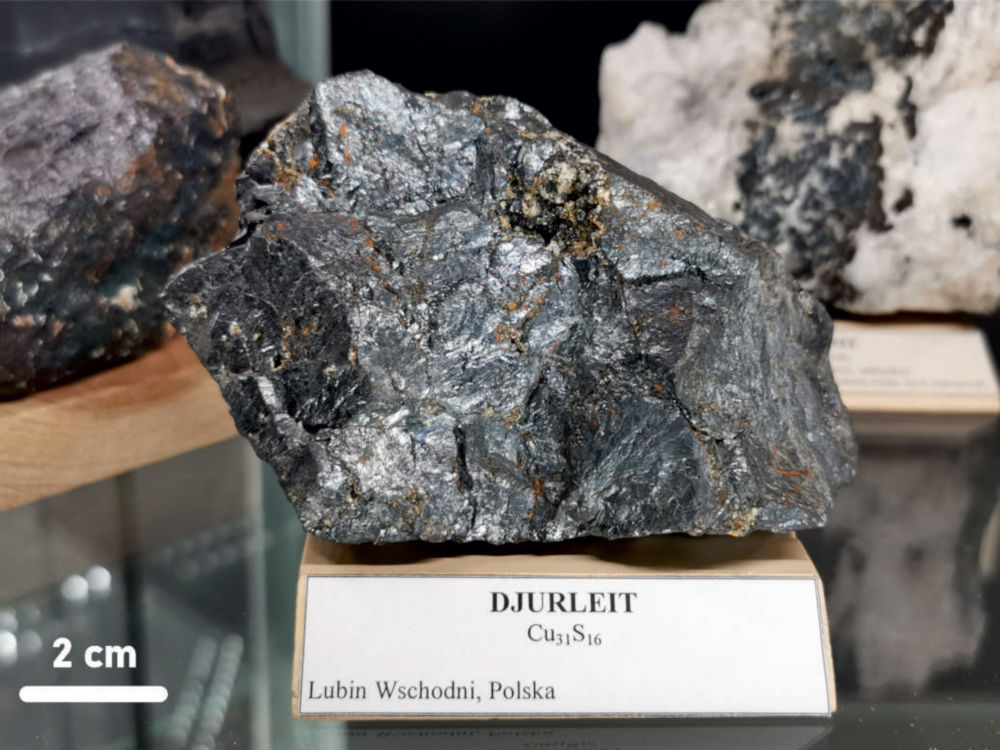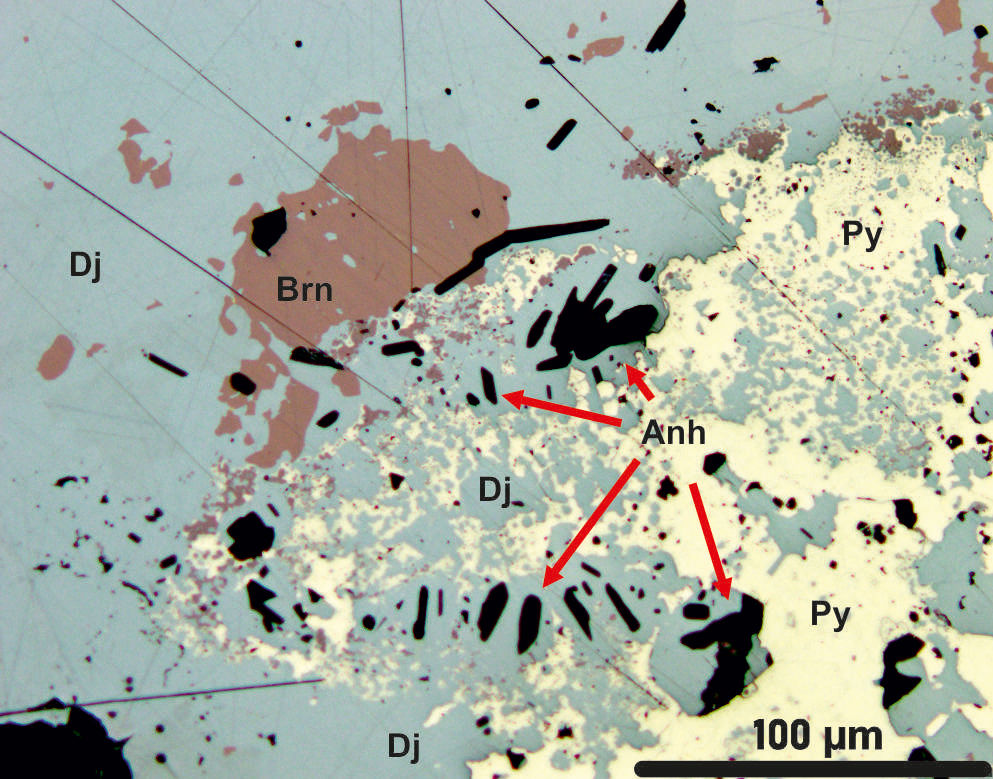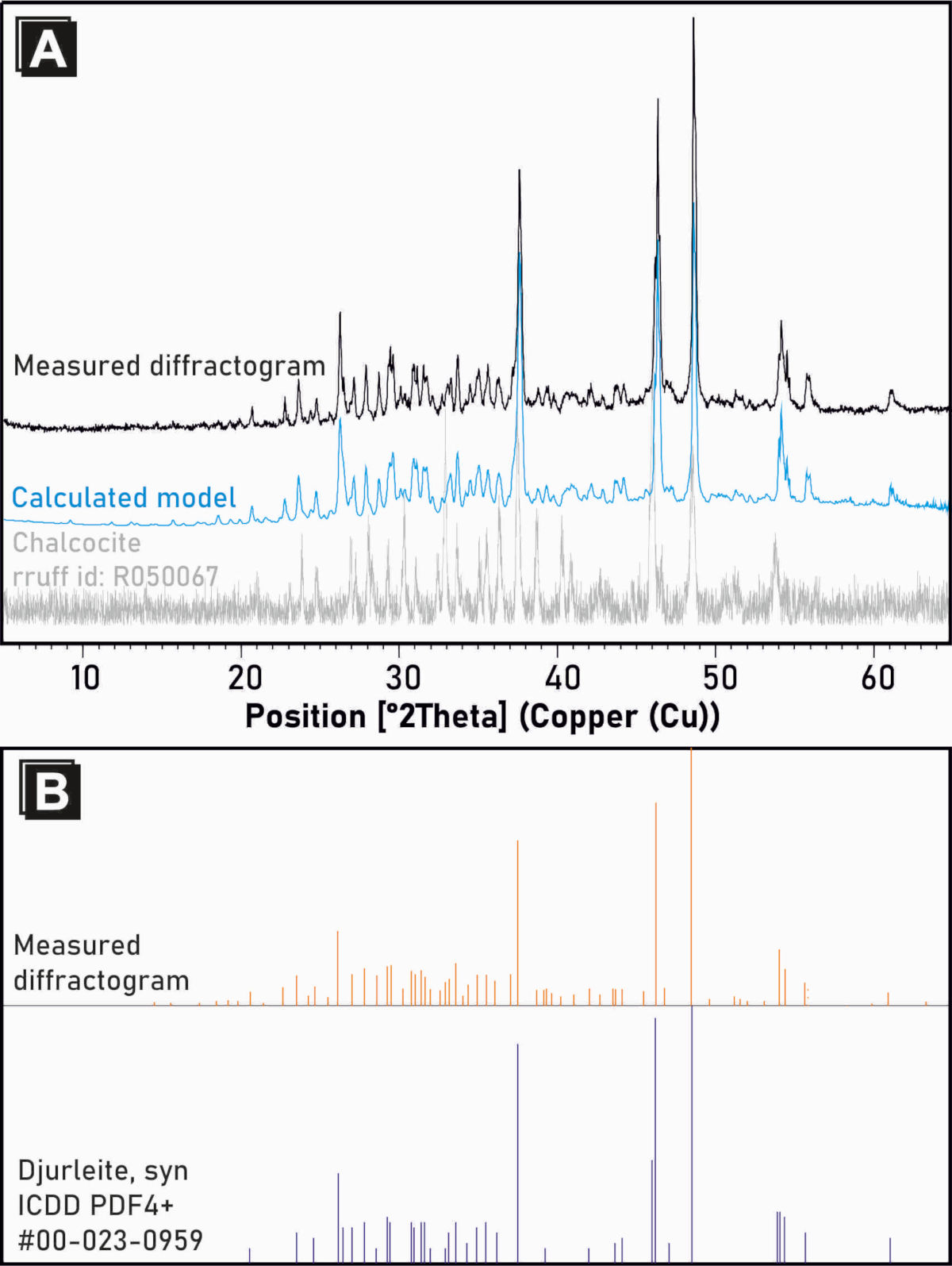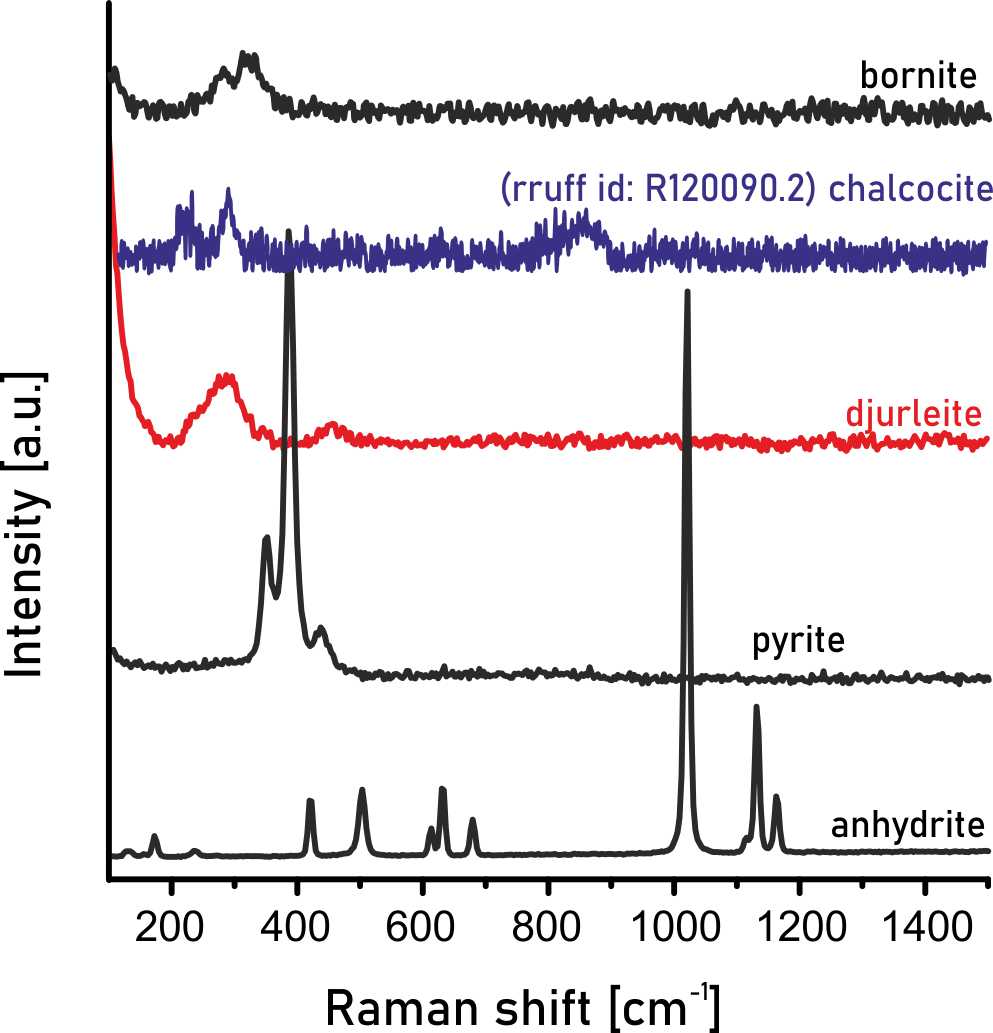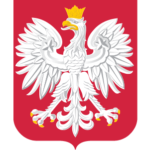The chalcocite group minerals are widely distributed among different hydrothermally affected rocks, the oxidized zone of copper sulfide deposits, or may be even crystalline from supersaturated volcanic gases. Some of the chalcocite group minerals form the main Cu orebodies. Djurleite (Cu31S16) is a rare member of the chalcocite group, with a very complex structure. The physical and chemical similarities between all members of the group make them almost unidentifiable by macroscopic and microscopic methods. In this study, Ag-bearing djurleite from the Kupferschiefer deposits, Lower Silesia, Poland, is characterized by EMPA (Electron Microprobe Analyses), XRD (X-Ray Diffraction), and Raman spectroscopy. Djurleite from the investigated site has the following general, average chemical formula: Cu30.86Ag0.1Fe0.04S16. The Ag content is up to 0.55 wt.%, while Fe is up to 0.19 wt.%. The presence of djurleite confirms a low-temperature (~90 °C), hydrothermal origin of the Cu-Ag deposit in Kupferschiefer, which is consistent with previously studies. Moreover, the authors believe that Ag-rich djurleite may often be mistaken for Ag-rich chalcocite, which used to be one of the main Ag-bearing minerals in the orebody from the Cu-Ag deposit in the Fore-Sudetic Monocline. More details in:
Szopa, K.; Krzykawski, T.; Banasik, K.; Król, P.; Skreczko, S.; Mounteanou, S.A.; Koziarska, M. EMPA, XRD, and Raman Characterization of Ag-Bearing Djurleite from the Lubin Mine, Lower Silesia, Poland. Minerals 2021, 11, 454. https://doi.org/10.3390/min11050454
